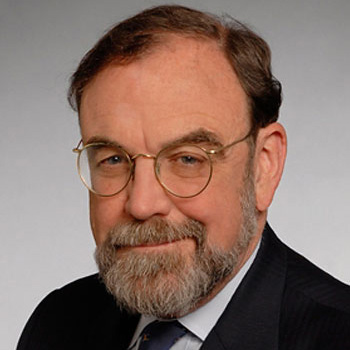Over the last three decades, U.S. and global securities markets have undergone tremendous change, driven by globalization, advances in information technology, and regulatory choices at the federal and international levels. The days of adventuresome floor trading and concerns of safeguarding ink-and-paper securities have given way to electronic order books within a multi-venue exchange system and to concerns about safeguarding interconnected global trade networks lead by SIFI’s. Artificial intelligence systems and distributed ledger technologies on the horizon have further potential to disrupt the landscape.
Markets today are dramatically different from those of 30 or 50 years ago, and a new comprehensive examination of the securities markets is urgently needed in order to better understand the relationship between the many significant developments in financial market microstructure and effective regulatory reform by U.S. federal and international authorities. The last comprehensive special study of the capital markets was conducted more than five decades ago. Headed up at the SEC by the legendary lawyer Milton Cohen, this original special study laid the foundation for years of sound regulation of our financial markets.
Last month, the Program in the Law and Economics of Capital Markets, a joint program of Columbia Law School and Columbia Business School, launched the New Special Study of the Securities Markets. We were honored to host leading lawyers, economists, academics, and regulators from around the world at Columbia Law School for a two-day conference on the future direction of securities market regulation. At the conference, eminent legal academics and economists presented seven papers intended to function as a roadmap for the implementation of the New Special Study. The seven papers included a legal paper and an economics paper relating to primary markets, trading markets, and intermediaries, and a final paper relating to how the globalization of securities markets has affected concerns of the types raised in the other six papers. There was also a discussion of the challenges posed by emerging technologies. Each of these seven papers defines, with respect to its area, what needs to be known for good policymaking in the coming years, surveys the existing literature to see what answers are already known, identifies the missing gaps, and frames the studies that are needed to fill these gaps.
Over 100 legal experts, economists, practitioners, and regulators attended the launch of the New Special Study project. Keynote addresses were delivered by Acting SEC Chairman Michael Piwowar and FINRA President and CEO Robert Cook. In his remarks, Acting Chairman Piwowar reiterated the need for the New Special Study, observing that “[a] renewed analysis of securities markets—where we are today, how we got here, and whether we should shift course — is long overdue.”
The New Special Study is a multi-year project being undertaken by our program that seeks to significantly inform and enhance the quality of financial market regulatory reform. The project will be conducted over the next four years with the advice of a steering committee of 15 leading legal and economic scholars, two legal practitioners, and a former regulator.
The first phase of the New Special Study will culminate in the preparation of a book that will gather the seven foundational papers and the commentary on them together with an overview of the results. During the second stage of the New Special Study, the program, with the aid and direction of the steering committee, will create a definitive plan of action for completion of the study, including the development of an outline of the final report and arrangement for the completion of the necessary empirical studies and other research.
The third stage of the New Special Study will implement the plan of action, including preparation of the ultimate result of the New Special Study, a comprehensive final report directed at federal financial regulators and the U.S. Congress and scheduled for completion in December 2020. The final report will comprehensively describe and explain the research conducted in connection with the New Special Study and will delineate the implications of that research for sound policy in the securities markets. Furthermore, the report, like the original Special Study, will aim to “foster accurate and realistic public understanding” of the markets.[1] A primary goal of the New Special Study is for this final report to have as significant and as lasting an influence on future policy-making as the original special study, which set the course of financial market regulation for many years thereafter.
ENDNOTE
[1] Report of the Special Study of Securities Markets of the Securities and Exchange Commission, April 3, 1963, Letter of Transmittal, at XVI, http://www.sechistorical.org/museum/papers/1960/page-2.php .
For further information about the New Special Study, please visit the Program in the Law and Economics of Capital Markets site at: http://www.law.columbia.edu/capital-markets.
This post comes to us from Columbia Law School Professor Merritt Fox, Columbia Business School Professor Lawrence Glosten, and Columbia Law School lecturer and Cleary Gottlieb Steen & Hamilton LLP Senior Counsel Edward Greene. They are the co-directors of the Columbia Law School and Columbia Business School Program in the Law and Economics of Capital Markets.
 Sky Blog
Sky Blog


